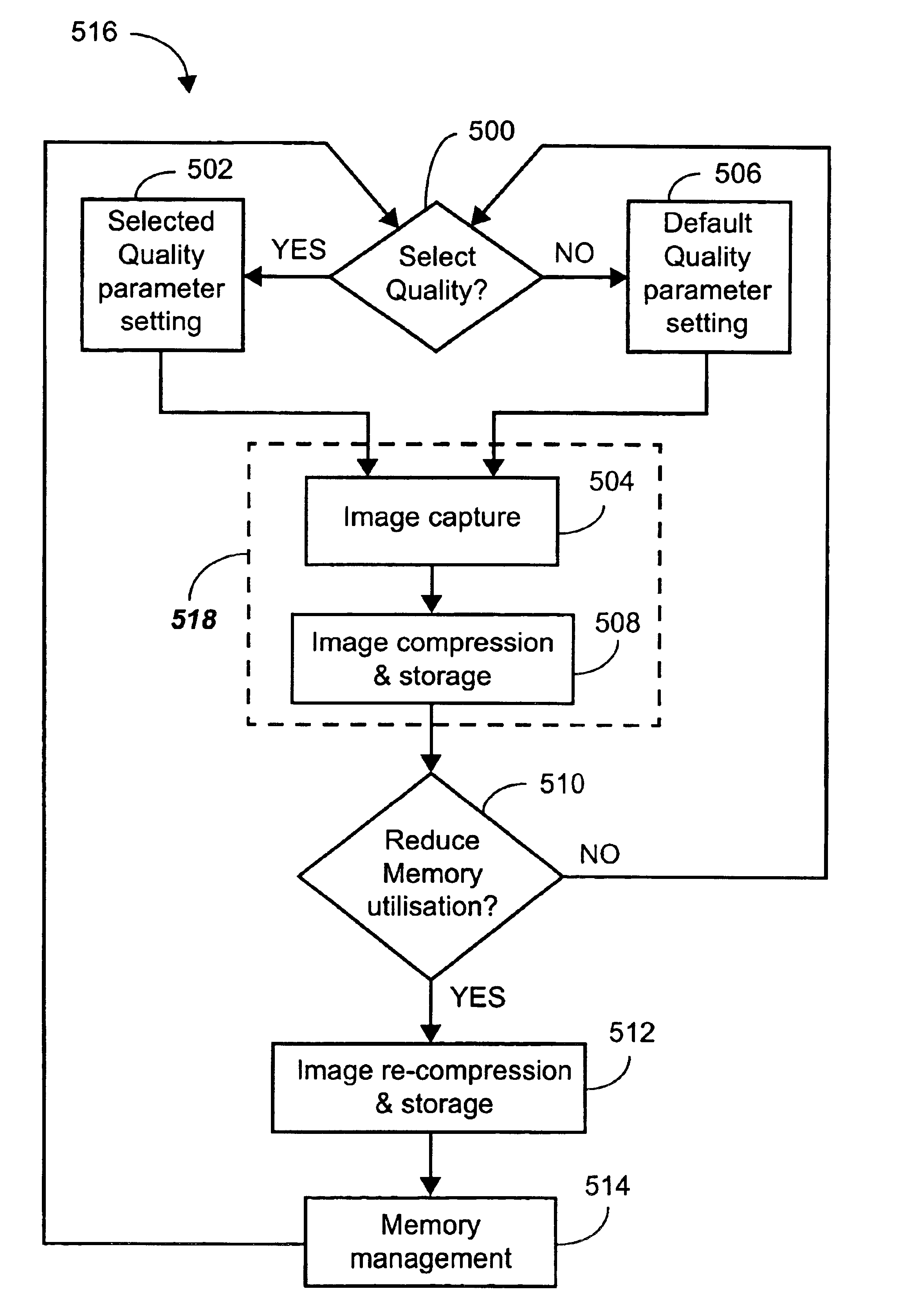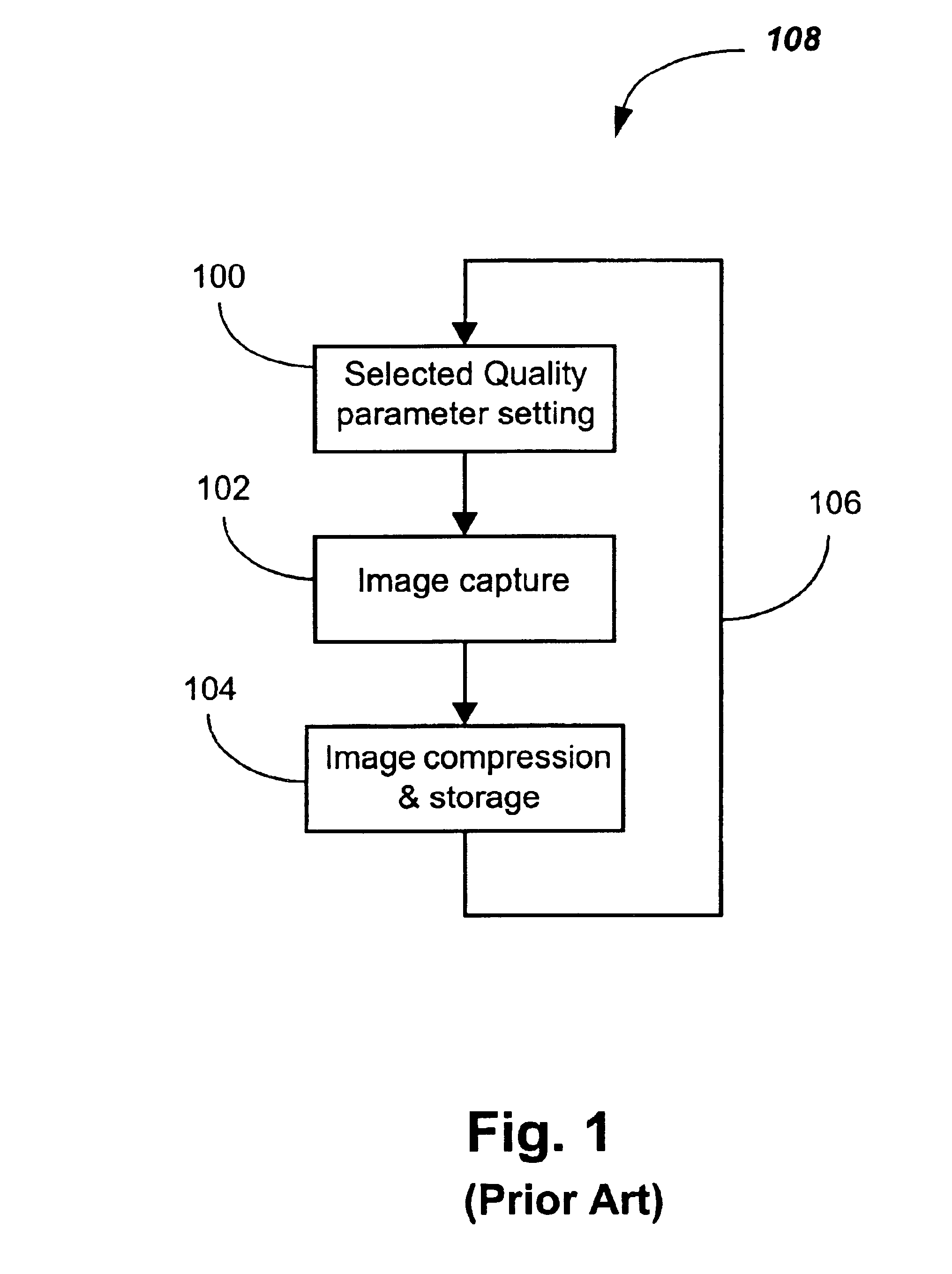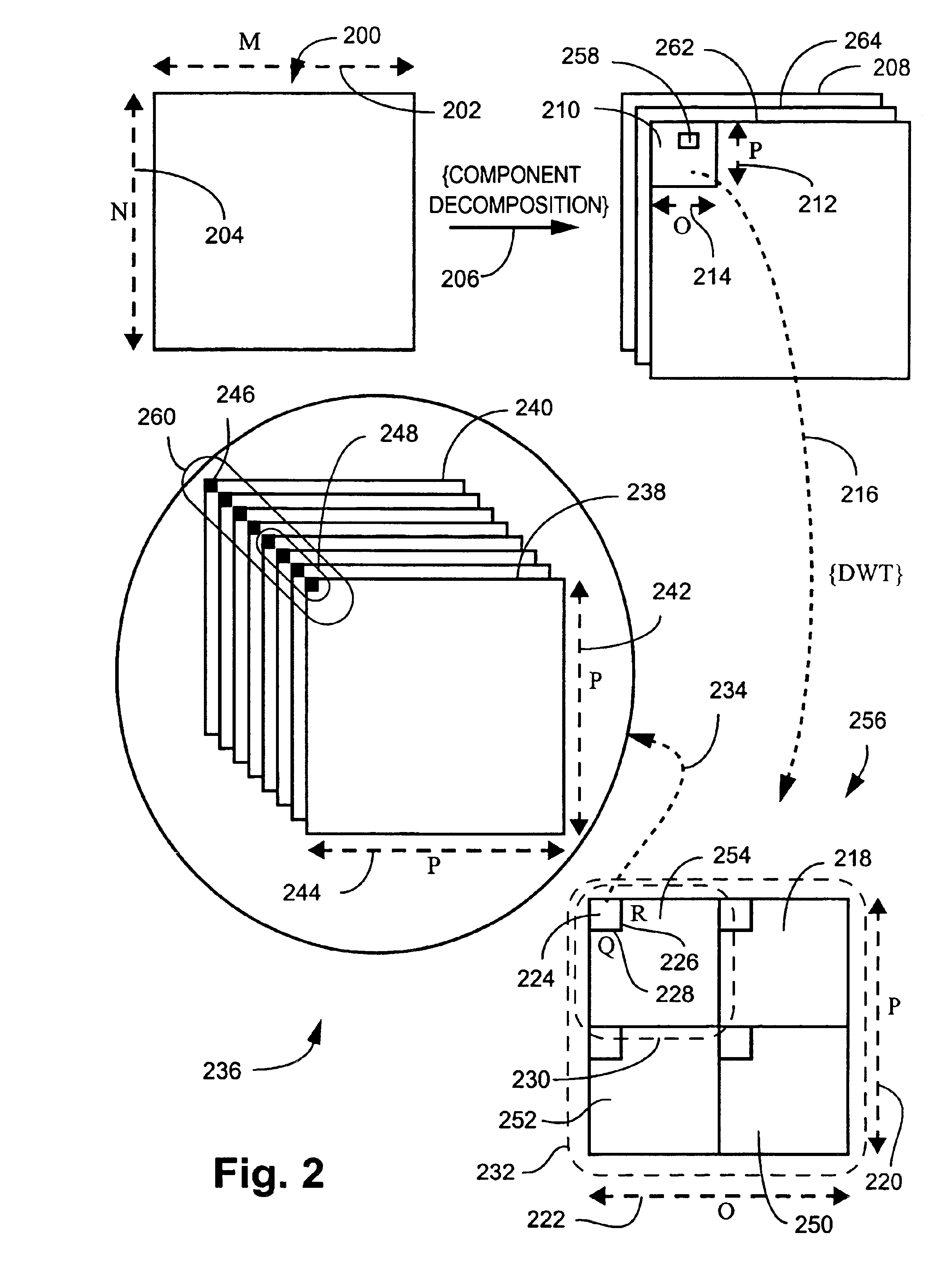Memory management of compressed image data
a memory management and compressed image technology, applied in the field of image compression, can solve the problems of reducing affecting the reconstructed image quality, and the cost of higher storage space consumption, and achieve the effect of recovering the memory capacity
- Summary
- Abstract
- Description
- Claims
- Application Information
AI Technical Summary
Benefits of technology
Problems solved by technology
Method used
Image
Examples
Embodiment Construction
[0052]Where reference is made in any one or more of the accompanying drawings to steps and / or features, which have the same reference numerals, those steps and / or features have for the purposes of this description the same function(s) or operation(s), unless the contrary intention appears.
[0053]Various terms of art have been used in this specification, typically being placed in quotation marks on their first occurrence. Examples of such terms include “image tile”, “tile component”, “coding passes”, “packet”, “tile-part”, and “progression order”. The various terms have been defined in the body of the specification, however in many instances, the reader can refer to the “JPEG 2000 Committee Draft, v1.0, 9 Dec. 1999″” for further details.
[0054]FIG. 2 shows an image encoding scheme in accordance with a preferred embodiment of the invention. The described scheme is largely consistent with the JPEG2000 Image Coding System as described in the “JPEG 2000 Committee Draft Version 1.0, 9 Dec. ...
PUM
 Login to View More
Login to View More Abstract
Description
Claims
Application Information
 Login to View More
Login to View More - R&D
- Intellectual Property
- Life Sciences
- Materials
- Tech Scout
- Unparalleled Data Quality
- Higher Quality Content
- 60% Fewer Hallucinations
Browse by: Latest US Patents, China's latest patents, Technical Efficacy Thesaurus, Application Domain, Technology Topic, Popular Technical Reports.
© 2025 PatSnap. All rights reserved.Legal|Privacy policy|Modern Slavery Act Transparency Statement|Sitemap|About US| Contact US: help@patsnap.com



